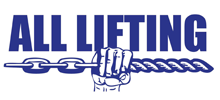
FALL PROTECTION WITH A LIFELINE SYSTEM
In situations where a fall cannot be prevented, lifeline systems are your next line of fall protection. Lifeline systems can be used to arrest workers in the event of a fall (active system), or restrain workers from reaching a fall hazard (restraint system). When choosing a horizontal system, the type of application and protection needed is critical. The location and environment whether indoors or outdoors are also factors to consider.
Lifeline system features
Temporary lifeline systems are designed to give workers mobility, they are lightweight, easy to install and extremely portable. They are ideal for temporary applications such as maintenance, painting or billboard work where the system will be left in place for a minute or several days. Common industry applications include maintenance to bridge work, construction and manufacturing.
Permanent lifeline systems are designed to be permanently installed on buildings and other structures where workers are exposed to a risk of falling when performing their work. They are designed to protect structures they are attached to and ensure the minimum amount of damage occurs in the event of a fall.
It is essential that each worker is fitted with a full body harness and lanyard with suitable energy absorbing. This allows workers to connect themselves to the lifeline via a glider which can move along the line. The system can be used for overhead, shoulder or foot mounted applications, and around corners at 500mm radius bend.
Identifying areas which require access for maintenance
Before using lifeline systems it is important to identify the areas which require access for maintenance, cleaning, or inspection. Give consideration to safe access points while keeping the line more than 2 metres from the nearest fall hazard area. Determine how many workers are required to use the line simultaneously, and ensure that intermediate supports are installed with a maximum spacing of 8 metres.
Lifeline systems must be installed and tested by a qualified person. Structural loading is calculated by a professional engineer who use software to provide precise loading on the brackets.
Different lifeline systems use
Common applications for permanent and temporary lifeline systems include; elevated machinery, stations or decks, roof access, window washing, sloped roof surfaces, building ledges/beams, power plants and paper mills, aircraft hangers, cranes and crane runways, commercial and industrial rooftops, communication towers, elevated rail cars and trucks, bridge Inspection, wastewater treatment, pipe racks, fixed anchor points.
All Lifting has a complete range of products for height safety and confined space rescue applications. Check our website.

